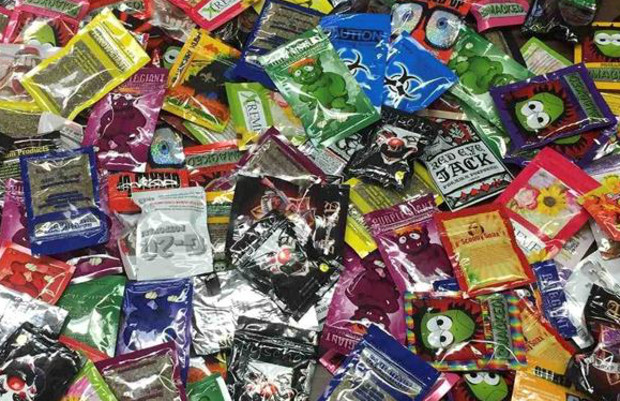
Legal
DEA Order Places Six ‘Spice’ Ingredients on Schedule I
BREAKING: A temporary scheduling order from the DEA has placed six more synthetic cannabinoids found in “spice” and “K2” on Schedule I. Banning these dangerous blends of artificial chemicals and inert plant matter (dishonestly sold as a legal alternatives to natural cannabis) is tricky because manufacturers are always changing their formulas.
The administrator of the Drug Enforcement Administration is issuing this temporary scheduling order making six synthetic cannabinoids used as the active ingredients in fake pot substances like “K2” and “spice” Schedule I narcotics.
The list of synthetic cannabinoids now considered to be Schedule I narcotics with no medical value now includes the following additions: 5F–ADB, 5F–AMB, 5F–APINACA, ADB–FUBINACA, MDMB–CHMICA and MDMB–FUBINACA. These chemicals join several others the agency has rescheduled using the same mechanism over the past few years.
According to the DEA, the first documentation of synthetic cannabinoids within the United States occurred in November of 2008 when U.S. Customs and Border Protection encountered it.
The DEA said the order — which will remain in effect for two years — is based on a finding by the administrator that the placement of these synthetic cannabinoids into Schedule I is necessary to avoid an “imminent hazard to the public safety.”
Synthetic Cannabinoids
5F-ADB: While nobody has ever died from using cannabis, it’s widely believed her synthetic impostors have not been as benign: 5F-ADB was first identified in November 2014 during an autopsy chemical analysis on someone who died using a substance that contained it.
In largely anti-pot Japan, 5F-ADB was found in autopsies of ten people who died from unexplained drug overdoses in late 2014. Japan quickly criminalized the compound, which is also thought to be more potent than many of its fake pot predecessors due to the extremely low levels found in folks postmortem.
5F-AMB: The compound is said to have caused one death directly and the other through ketoacidosis; a condition commonly found in Type 1 diabetes.
The first place in the U.S. to ban the substance was Louisiana, where it was commonly called “Train Wreck 2.” With the lack of trademark protections for cannabis producers, the manufacturers of these killer compounds can easily put the name of a classic strain on their poison without fear of reprisal.
5F–APINACA: According to a 2014 report in Forensic Toxicology, this synthetic cannabinoid was discovered in South Korea. It is already banned in China, Germany and the Czech Republic.
ADB–FUBINACA: this chemical compound is most famously found in K2, which has recently been rapidly criminalized. Last Year, New York Governor, Andrew Cuomo, announced aggressive new statewide enforcement actions to combat the illegal sale of K2, a followup on a set of emergency regulations filed in 2015 that banned the production of K2 in the state.
“The evolution of synthetic drugs is an alarming public health risk – but we are on the front lines of the battle,” Governor Cuomo said. “The state will continue to identify emerging compounds that put users in danger and aggressively chase down sellers of these toxic substances.”
MDMB–CHMICA: Of all the compounds on the list, this is one of the sketchiest — it’s a straight up killer: 71 serious incidents took place across nine European countries between 2014 and 2016, including 42 acute intoxications and 29 deaths. An attempt is being made to ban it across the entire European Union.
MDMB–FUBINACA: 2014 saw this chemical menace tear across Russia. The main ingredient in many of the things that fell under the catchall term Spice, MDMB–FUBINACA was a factor in over 25 deaths and sent 700 people to the hospital in Russia alone. It’s believed the batch of Spice that caused all of this damage entered the country through Siberia from Southeast Asia.
TELL US, would increased safe access to natural cannabis reduce abuse of synthetics?
























